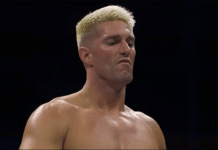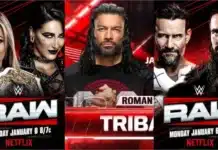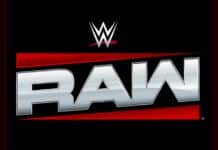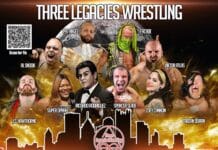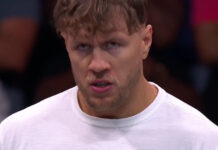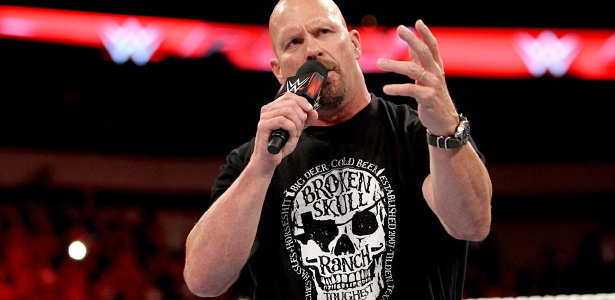
The 2001 edition of Wrestlemania would be a defining event in not only the direction of the industry, but in the history of the business as well. The long-rumored WCW purchase went through and was announced publicly just a week earlier, and with a substantial level of uncertainty about the future of the business, the entire sports entertainment world watched this broadcast, hoping for some indication about what could be next for everyone involved. Would there be some hostile takeover at Vince McMahon’s marquee event? Would one of the key players from the Turner organization show up to crash the party and kickoff an angle that would finally set up the super bowl of wrestling? In truth, outside of a cameo where WCW mid-carders were barely visible from a sky box in the massive Astro Dome, there wasn’t much mention of the Ted Turner group. However, the aspects that ultimately allowed the WWF to win the ratings war and for the buyout to be possible were on full display because an all-star cast of performers delivered an iconic event that some consider to be the greatest WM event in history.
The show opened with a really solid William Regal vs. Chris Jericho bout, although it seemed a little rushed because these two only had roughly five minutes for this contest. The finish saw Jericho beat Regal to retain the IC belt, but both athletes would have a more high profile spot at WM in the years that followed. Next up was the APA and Tazz vs. The Right to Censor, and the match was fine, but there’s more to be said about the RTC gimmick. First of all, it was very wise for the WWF to take the gimmicks they were getting complaints about, specifically about the content on UPN, which was a broadcast station, and use it for an angle. That way they didn’t have to write several known characters off of television and could use the real-life complaints for an angle that got a considerable amount of heat. Speaking of which, Stevie Richards, as was the case for the majority of his career, didn’t get the credit he deserved for his work with the RTC gimmick. There was a point in time that the Right to Censor was one of the most hated acts in the company, and the audience reacted when the baby face got the advantage over the heels. Stevie’s mic work and ability to get legitimate heat with this gimmick seems to be overlooked. Bradshaw waffled The Godfather with a clothesline to get the win.
The triple threat Hardcore title match was a fun brawl with some wild shenanigans throughout the contest. Raven was typecast for most of this stint with the WWF as just another ECW guy, which was probably why he was used for the hardcore division here. It’s somewhat odd that Raven built so much of his persona on character development, but the writing team at the time really didn’t do anything to use or build upon his character. In fact, one of Raven’s strengths was the depth of his persona, and the WWF simply missed the boat of him. One of the highlights of this contest was Raven trying to escape on a golf cart while the Big Show attempts to stop him, while they almost ran over a cable that would’ve knocked the show off the air. Kane jumped in another golf cart with the ref along for the ride and almost legitimately hit Raven with the golf cart, but hit the brakes to save Raven’s leg from being run off. Eventually Raven and The Big Show fell off the stage and then Kane dove off to get the victory. It should be mentioned that Kane was really hitting his stride during this period and he was definitely a top-tier performer. I think the only reason that he wasn’t a regular in the title picture until a few years later is because he was a big fish in an even bigger pond. At this time, Stone Cold and The Rock were setting records so it didn’t make sense to shift the main event scene.
Eddie Guerrero beat Test to win the European championship in a very solid match. I’m not sure if it was more because he was working with Guerrero, but Test looked like a star in this bout. In some ways, it makes you wonder why Test more floundered later in his career and outside of a major push on the doomed ECW brand, he more or less stayed in the mid-card. Test had the look, the size, and decent in-ring skills that you would look fit the WWE mold. If I had to guess, I’d like it was a combination of how stacked the roster was at the time and a lack of mic skills that might’ve prevented Test from achieving more success.
Kurt Angle defeated Chris Benoit in an absolutely stellar match. They started off with a lot of amateur style mat work before it built to a very physical contest. Technically speaking, this is one of the best WWF matches you can find, and this performance is one of the reasons this event is memorable.
Chyna pinned Ivory to win the Women’s championship, but not long after this, her contract expired and she eventually decided to leave the company, with the belt being vacated before it resurfaced a few years later. Make no mistake about it, most of this bout was Ivory making her opponent look good, but that’s not to take anything away from Chyna, she looked like a star and a one-sided contest fit the narrative. The circumstances around her exit from the organization remain a source of controversy, depending on who you ask or who you believe. Bruce Prichard, an executive at the time and returned more recently, claims that Chyna wasn’t pushed out of the promotion, but rather that she wanted more money than she was offered to re-sign a contract. Granted, it’s a messy personal situation with Chyna and Triple H after their real-life split, but the bottom line is, Chyna was a major star at the time, and Vince McMahon has done business with people that had different disputes with the company before so I would guess that Vince would’ve been willing to offer her another contract despite the personal scenario with Triple H. As mentioned before, it’s very sad that Chyna had several mental health problems and substances problems before she passed away a few years ago. As I said a few days ago, Chyna was undoubtedly a pioneer in the industry because she changed the parameters of women in the industry.
Vince vs. Shane McMahon was bowling shoe ugly in the ring and totally sports entertainment based, but it delivered a dramatic performance. As much as the McMahon family was overused and shoehorned into the product in more recent years, this angle worked, and more specifically, the reaction that Linda McMahon got when she stood up from the chair to hit Vince with a low blow is proof that this storyline was over with the crowd. Shane won after a coast-to-coast drop kick to Vince and both deserve credit for the back and fourth drama that worked very well here.
The TLC bout was incredible and it’s probably a good thing that this was the finale in the trilogy of ladder matches between these three teams because each contest under this stipulation had a very direct purpose of topping the previous match. In many respects, the series of Dudleys, Hardys, and E&C ladder matches redefined the standard for risky matches in the entire industry. There are way too many highlights and bumps to discuss, but the spot where Edge speared Jeff Hardy while he was hanging from the belt was one of the most memorable clips in the history of the industry.
The gimmick battle royal was more about the pop for the entrances than anything, but the actual match was kept short and was very entertaining. It was really great to see Bobby Heenan and Mean Gene back on commentary for this. This goes without saying, but I will always take the opportunity to say it that Bobby Heenan is one of the most entertaining figures in the history of the industry. The Iron Sheik won the bout, probably because he couldn’t take a bump over the ropes to be eliminated, but Sgt. Slaughter put him in the camel clutch after the bell.
The Undertaker vs. Triple H was a really good match and it shows the depth on this card that two stars of this level were in an almost secondary type of match on this pay-per-view. These two are involved in several more moments at WM so there’s a lot more to discuss for the future events.
The main event was one of the best matches in WM history, and the back and fourth action was absolutely tremendous. The match was great, but the aftermath of it how a much more lengthy impact on the industry. It’s well-documented that even Steve Austin himself acknowledges that the heel turn was a mistake, but the reason why it was such a flop is probably the biggest reason that in many ways, WM 17 was considered the conclusion of the Attitude Era. Stone Cold became the biggest star in the history of the business because he was the anti-hero, but then he joined the establishment with he shook hands with Vince McMahon so there was a total shift in the narrative of what made the Attitude era successful.
What do you think? Comment below with your thoughts, opinions, feedback and anything else that was raised.
Until next week
-Jim LaMotta
E mail [email protected] | You can follow me on Twitter @jimlamotta

